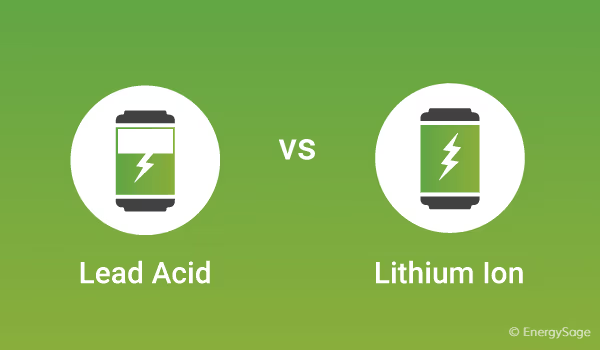
In considering the best battery to choose while designing and manufacturing our Hussh Pod range it was important that the solution we choose had to satisfy a number of important factors such as battery efficiency, capacity and lifespan.
Two of the most common battery chemistry types are lithium-ion and lead-acid. As their names imply, lithium-ion batteries are made with the metal lithium, while lead-acid batteries are made with lead.
With these differences in battery come differences in performance and cost. While both lithium-ion and lead-acid battery options can be effective storage solutions, here’s how they compared when putting side by side in key categories:
Lithium-ion and lead-acid batteries can both store energy effectively, however, the unique advantages that Lithium-ion presents make it an obvious choice. Here are some important comparison points considered when deciding on the battery type:
The one category in which lead-acid batteries outperformed lithium-ion options is the cost. While lead-acid batteries typically have lower purchase and installation costs compared to lithium-ion options, the lifetime value and performance of lithium-ion batteries outways the cost overall.
The capacity of a battery is measured in how much energy can be stored and discharged, lithium-ion battery technology has been well-proven to have a significantly higher energy density than lead-acid batteries. This means that a larger amount of energy can be stored in the same amount of space. Because more energy can be stored in a Lithium-ion battery, more energy can be discharged, providing power for a longer period of time.
The measurement of capacity is the depth of discharge (DOD). A battery’s depth of discharge is the percentage of the battery that can be safely drained of energy without damaging the battery.
The DOD value gives the real energy received from the battery during one cycle. For example, the DOD 80% means that 80% of the nominal capacity will be taken: with a battery of a capacity 100h, it means 80AH will be taken from the battery during discharge (without any additional charging).
Lead-acid batteries should not be discharged past roughly 60 percent, as doing so negatively impacts the lifetime of the battery.
Similar to solar panel efficiency, battery efficiency is also an important factor to consider when making a comparison. Most lithium-ion batteries are 95 percent efficient or more, compared to lead-acid batteries, meaning that 95 percent or more of the energy stored in a lithium-ion battery is actually able to be used. Lead-acid battery efficiency is closer to 80 percent.
Batteries degrade over time and become less effective in operating as they age. Lifespan is measured in cycles. Discharging a battery of power then recharging it again counts as one ‘cycle’. Lithium-ion batteries generally have a cycle of 6000, this means the battery can discharge and charge 6000 times before degradation. A lead-acid battery generally has 2000 cycles. The remaining capacity in a battery is called ’ageing index’.
The ageing index means the decrease of the capacity during the cycle life. The new battery has 100% of capacity. With more and more cycles the capacity is reducing. The battery is getting weaker and weaker.
LiFePO4 cells have a very low ageing index. After 6000 cycles that batteries will keep 80% of the nominal capacity. This means the batteries can be used even after the nominal number of cycles was carried out.
The highlighted advantages of the Lithium-ion battery against lead-acid technology made it the obvious choice as the power storage solution for our Hussh Pods
Despite having higher upfront costs, lithium-ion batteries are usually more valuable than lead-acid options.
In the end, we choose the LiFePO4 battery technology because it is far ahead of many other battery technologies.